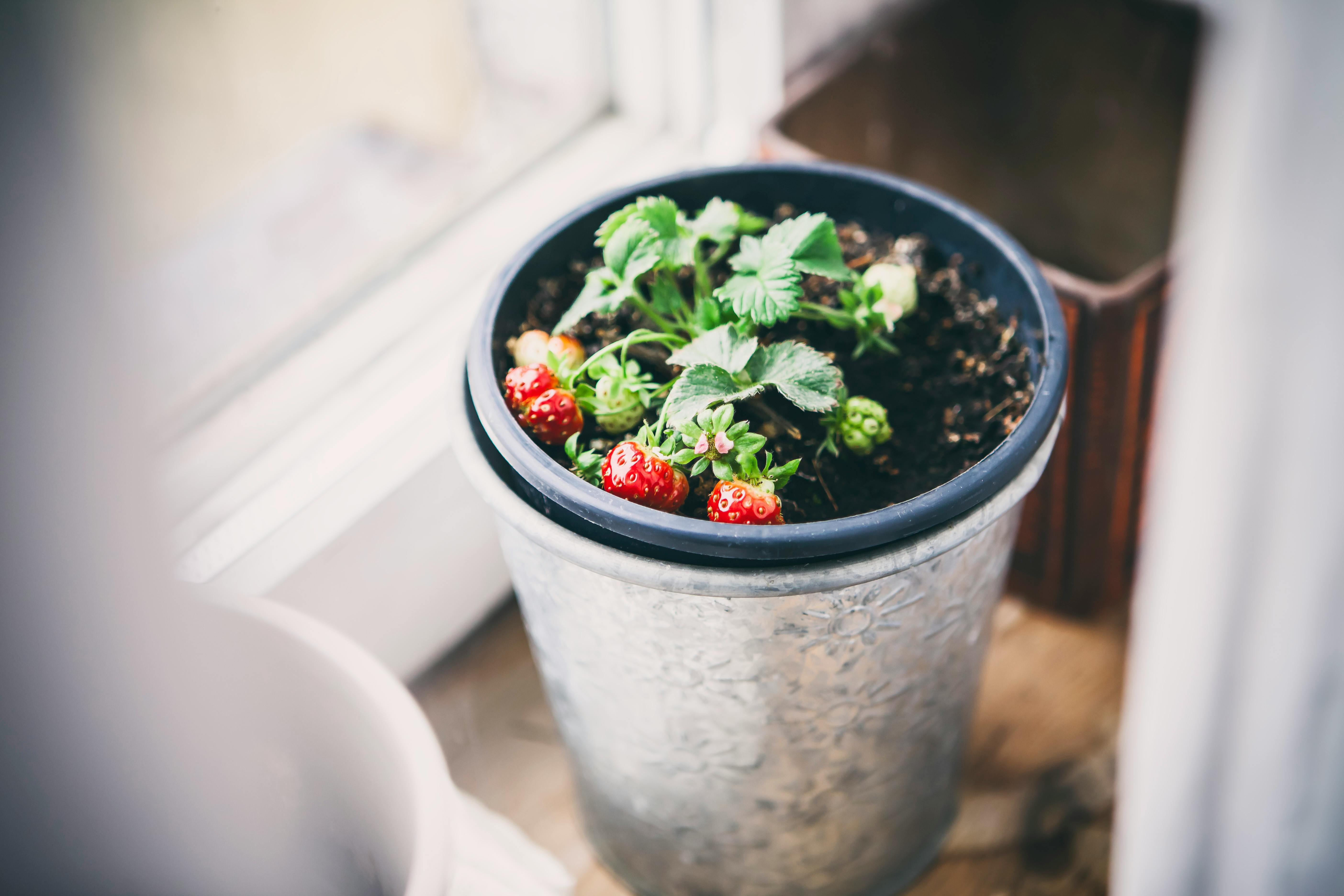Strawberries are a delicious and nutritious fruit that can be enjoyed in a variety of dishes. They are also easy to grow, as long as their soil needs are met. One important factor for successful strawberry plants is soil pH. Knowing whether or not strawberries like acidic soil can help you choose the right soil for your strawberry patch.The ideal Soil pH for growing Strawberries is between 5.5 and 6.8.
What Type of Soil is Best for Strawberries?
Strawberries are one of the most popular and delicious fruits out there, and they can be grown in a variety of different soils. However, some soils are better than others when it comes to growing strawberries. For optimal growth, strawberries need a soil that is light and well-draining with plenty of organic matter. The ideal pH range is between 5.8 and 6.5, so if your soil falls outside of this range you may need to adjust it before planting your strawberries.
When it comes to choosing the right soil for your strawberry plants, sandy loam is often the best choice. Sandy loam retains moisture well while still allowing good drainage, making it ideal for growing strawberries. If you have clay-based soil that doesn’t drain well, you should consider adding organic material such as compost or peat moss to improve its drainage capabilities. You should also add some fertilizer to provide the plants with the nutrients they need for optimal growth.
It’s also important to make sure that your soil has enough nutrients for your strawberry plants to thrive. Adding compost or aged manure will help ensure that your soil has enough organic material and will help keep it nutrient-rich between harvests. Adding a slow release fertilizer at the start of each season will also provide your plants with all the necessary nutrients they need throughout the growing season.
Overall, sandy loam is generally considered the best type of soil for growing strawberries as it provides good drainage and retains moisture well while still providing plenty of organic material and nutrients for optimal growth. However, if you don’t have access to sandy loam or if your soil’s pH falls outside of the ideal range then you may need to adjust its composition before planting your strawberries in order to maximize their growth potential and ensure a successful harvest.
Amending Soil for Growing Strawberries
Strawberries are a delicious fruit that can be grown in the home garden. To ensure a successful crop of strawberries, the soil must be amended to provide optimal growing conditions. Amending the soil for strawberries helps to improve drainage, aerate the soil, and add nutrient value. By amending the soil correctly, you will be able to maximize your strawberry yield.
The first step in amending the soil for strawberries is to check the pH of your soil. Strawberries prefer a slightly acidic pH level between 5.5 and 6.8. If your soil pH is too low or too high, you can use sulfur or lime to bring it within this range. You should also test your soil for nutrient levels like nitrogen, phosphorus, and potassium; adding fertilizer if necessary.
Once you’ve adjusted the pH of your soil and added fertilizer as needed, you should work organic matter into the soil. Compost is an excellent choice for amending strawberry beds as it helps retain moisture and provides additional nutrients to the plants. Adding straw mulch around plants can also help reduce weeds and help retain moisture in the ground.
Finally, make sure that your strawberry bed is well-draining by incorporating coarse sand or gravel into clayey soils that drain slowly. This will help prevent standing water from accumulating around plants which can lead to root rot and fungal diseases. After adding sand or gravel, mix it into existing soils using a garden fork or tiller.
By following these steps for amending your soil before planting strawberries, you can ensure optimal growing conditions and a healthy crop of delicious berries at harvest time!
Environmental Factors
Strawberries are a popular crop, but the growing conditions for strawberry plants can be tricky. The environmental factors that affect strawberry growth and development include temperature, sunlight, water, and soil. Temperature is very important for the growth of the strawberry plants; they need warm temperatures with plenty of sunlight and relatively cool nights. Sunlight is needed for photosynthesis and to help regulate fruit production. Water is also essential for proper growth; too little or too much can cause problems. Finally, the soil needs to be well-drained and have adequate nutrients available for the plant to absorb.
Genetic Factors
In addition to environmental conditions, genetic factors also play a role in strawberry growth and development. Strawberry plants have been selectively bred over time to produce larger fruits with higher yields than their wild counterparts. These changes in genetics have allowed growers to increase their yields without having to change their environmental conditions drastically. Additionally, some varieties may require specific environmental conditions that need to be met in order for them to grow successfully.
Cultural Practices
Cultural practices are also important when it comes to growing strawberries. Proper planting techniques are essential in order for the plants to grow successfully; this includes spacing out the plants so that they get adequate air circulation and receive enough sunlight. Additionally, mulching helps retain moisture in the soil and can help protect against weeds and other pests that might harm the plants. Proper pruning is also important as it helps promote healthy growth by removing dead or damaged leaves and branches.
Overall, there are many factors that affect strawberry growth and development; however, by understanding these factors and taking proper care of your strawberry plants, you can ensure successful yields year after year!
The Benefits of an Acidic Soil for Growing Strawberries
Strawberries are popular fruits that are enjoyed by many around the world. To grow strawberries successfully, they require an acidic soil to thrive. An acidic soil is one with a pH level of 5.5 or lower, and it typically contains organic matter that can help improve the soil’s structure and nutrient composition. An acidic soil is beneficial for growing strawberries because it helps promote better growth and yields.
One of the primary benefits of an acidic soil for growing strawberries is that it helps to increase nutrient availability. The acidity in the soil allows essential nutrients such as phosphorus, potassium, calcium, and magnesium to become more available to plants. This can help boost yields by allowing the plants to take up more nutrients from the soil.
Another advantage of an acidic soil for growing strawberries is that it helps to reduce diseases and pests. Many diseases and pests prefer a neutral or slightly alkaline environment, so having an acidic soil can make them less likely to invade your strawberry patch. Additionally, some organisms that are beneficial for strawberry growth will thrive in an acidic environment, which can further help your plants stay healthy and productive.
Finally, an acidic soil can improve drainage in your strawberry patch. This helps prevent waterlogging and helps keep oxygen levels at optimal levels so that your plants will have enough air supply to grow healthy roots and foliage. Additionally, waterlogging can lead to nutrient deficiencies in your plants, so reducing this risk will further benefit your strawberry crop’s health and yield potential.
In conclusion, having an acidic soil is essential for successful strawberry growth due to its ability to increase nutrient availability, reduce disease pressure, improve drainage, and encourage beneficial organisms in the area. For these reasons, it is important to ensure that your strawberry patch has a pH level of 5.5 or lower if you want optimal growth results from your crop

The Disadvantages of an Acidic Soil for Growing Strawberries
Growing strawberries in acidic soil can be a challenge. The soil pH needs to be adjusted and extra care needs to be taken when fertilizing the plants. An acidic soil can also affect the growth of the plants, resulting in poor yields and reduced fruit quality. Here are some of the disadvantages of an acidic soil when growing strawberries:
First, an acidic soil can limit the availability of certain essential nutrients for proper plant growth. Nutrients such as nitrogen, phosphorus, and potassium are especially important for optimal strawberry production. When these nutrients are not available in adequate amounts due to a low pH level, it can affect the overall health and yield of the strawberry crop.
Second, an acidic soil can lead to increased levels of aluminum in the plants. Aluminum is toxic to many plants, including strawberries, and at higher levels it can stunt their growth or even kill them. Additionally, high levels of aluminum in the soil can make it difficult for other beneficial microorganisms to survive, further reducing yields.
Third, an acidic soil is more prone to disease and pest infestations than soils with neutral pH levels. This is because many pathogens thrive in acidity and are able to quickly spread and cause serious damage to plant health. Pests such as aphids and spider mites are also more likely to attack plants grown in an acidic environment than those grown in neutral soils.
Finally, an acidic soil is less able to hold onto water than one with a neutral pH level. This means that more frequent irrigation is needed during dry periods or when temperatures are high. Without sufficient water, plant growth will suffer and yields will decrease significantly.
In conclusion, there are numerous disadvantages to growing strawberries in an acidic soil including limited nutrient availability, increased aluminum toxicity levels, increased risk of disease and pests infestations, and decreased water retention capacity which all lead to poor yields and lower quality fruit production. Therefore it is important that gardeners adjust their soils pH levels before planting their crops if they want optimum results from their strawberry production efforts.
Testing the Acidity of Your Strawberry Plant’s Soil
Testing the acidity of your strawberry plant‘s soil is an important step in maintaining a healthy garden. Knowing the acidity of your soil helps you determine what type of fertilizer to use and if you need to adjust the pH balance. There are several ways to test the acidity, including using a soil testing kit, using litmus paper, or measuring pH with a digital pH meter.
Soil Testing Kit
A soil testing kit is an effective and easy way to test your soil for acidity. Kits are available in home and garden stores, or online. The kits come with instructions on how to take a sample and then analyze it using a color chart. To take a sample, dig down into the top 6 inches of soil near your strawberry plant and collect 1-2 cups of it in a clean container. Once collected, mix it thoroughly with water as directed in the instructions. Then follow the directions for testing and interpreting results on the color chart provided with your kit.
Litmus Paper
Litmus paper is another option for testing your strawberry plant’s soil for acidity levels. This method requires purchasing litmus paper strips from an online retailer or garden store. To use litmus paper, remove a sample of soil from around your plant as described above and mix it with water in a clean container until it forms a paste-like consistency. Dip one end of the litmus paper into the paste and wait for 30 seconds before removing it from the paste and comparing its color against a color chart provided by the manufacturer to determine how acidic or alkaline your soil is.
Digital pH Meter
The most accurate way to measure acidity levels in your strawberry plant’s soil is by using a digital pH meter. A digital pH meter reads directly from 0-14 on its digital display screen, making it easier to read than other methods like litmus paper or kits that require interpreting results from color charts or tables. To use this method, remove some soil near your plant as described above and mix it with water until you have created a paste-like consistency. Then insert one end of the digital pH meter into the paste and read off its digital display screen what level of acidity is present in your soil sample.
Increasing Acidity in Strawberry Plant’s Soil
One of the most important factors in successfully growing strawberry plants is the acidity level of the soil. The ideal pH range for strawberries is between 5.5 and 6.5, which is considered to be slightly acidic. To increase the acidity of the soil, you can add sulfur or aluminum sulfate to the soil. Both materials will help to lower the pH level of the soil, making it more acidic. You should add these materials according to the package instructions and make sure to mix them in well with the existing soil. Additionally, adding organic matter such as peat moss or compost can also help to increase soil acidity levels over time.
Decreasing Acidity in Strawberry Plant’s Soil
If your soil is too acidic for strawberry plants, then you will need to take steps to raise its pH level. The best way to do this is by adding lime or dolomite lime to your soil. This will help neutralize some of the acidity and bring it closer to a neutral pH range that is suitable for strawberry plants. Again, make sure that you follow package instructions when adding these materials and mix them in well with your existing soil. Additionally, you can also use organic matter such as manure or compost which will help break down any excess acidity over time as well.

Conclusion
In conclusion, it is clear that strawberries can grow in acidic soil. This is due to their high tolerance for acidity and the fact that they require a soil pH range between 5.0 and 6.5. While too much acidity can be harmful to other plants, strawberries are able to thrive in acidic soil due to their unique adaptability to different environments. Therefore, gardeners who want to grow strawberries can do so even if their soil has a lower pH level than what is recommended for other plants.
Gardening with strawberries can be an enjoyable experience when the proper amount of care and attention is given. By understanding the needs of strawberries such as acidic soil and adequate water and sunlight, gardeners can ensure that their strawberry plants will flourish and produce delicious fruits for many years to come.



